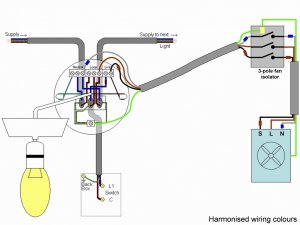I'm replacing an extractor fan. The new one (manrose mf100t) instructions say it should be protected by a 3a fuse. The existing one was installed (not by me) with an isolator switch, but no 3a fuse.
I could install, but as there is both a Live and Switched Live going in, which do I protect with a fuse? Or do I do both?
I could install, but as there is both a Live and Switched Live going in, which do I protect with a fuse? Or do I do both?





